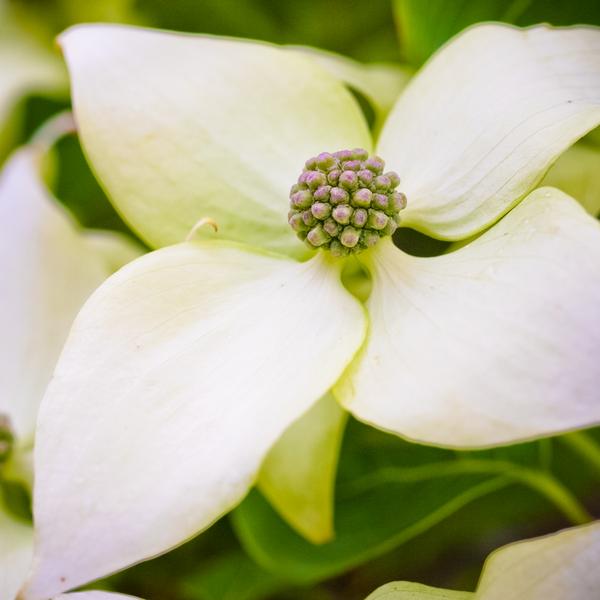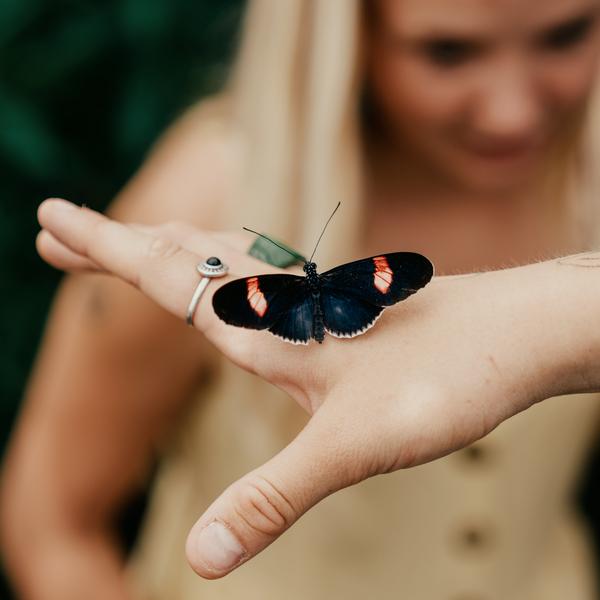Palm House
The beautiful Victorian Palm House is an important part of the Natural History Museum Denmark's living collections. With its central location, the house forms a green oasis of subtropical and tropical plants.
The protected Palm House in the Botanical Garden was constructed between 1872-74, with brewer J.C. Jacobsen as one of the driving forces behind the project. The architect of the Palm House was city architect Peter Christian Bønecke, and it is made of cast iron and glass. The inspiration for the Palm House was drawn from the Crystal Palace in London, which was built for the Great Exhibition in 1852.

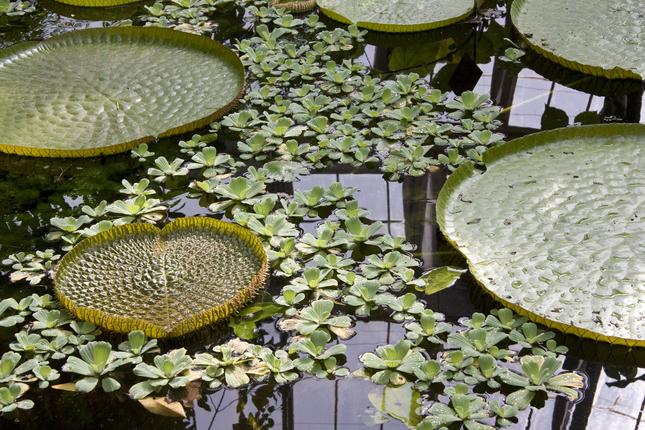

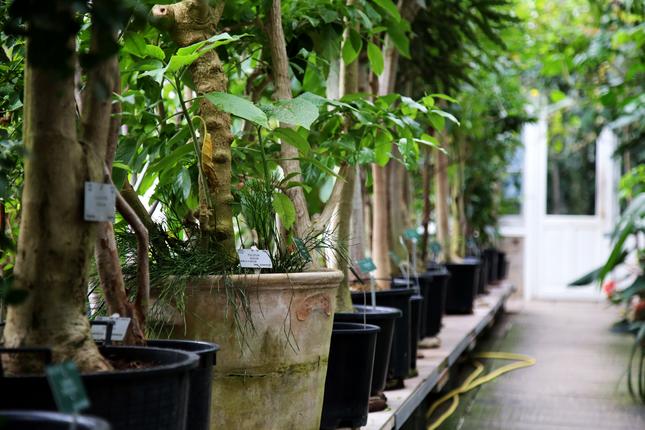
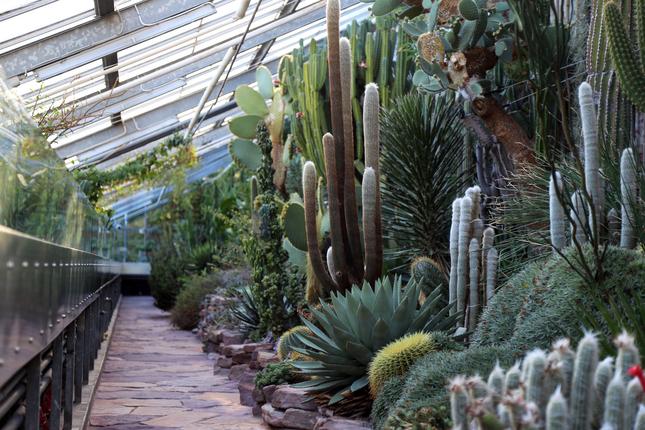
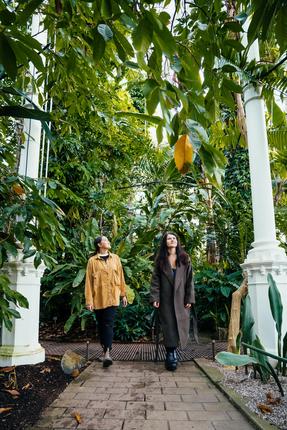

Explore the tropics
In the Palm House, you can experience exotic and rare plants growing in various tropical and subtropical environments. Explore greenhouses such as 'Water Plants and Mangroves,' 'Warm Subtropics,' 'Dry Tropical Regions,' and the 'Mediterranean House.'
Giant bamboos, large palms, spectacular flowers, and carnivorous plants are just a small selection of the botanical collection you will encounter.
The Succulent House and the Butterfly House are also part of the Palm House complex.
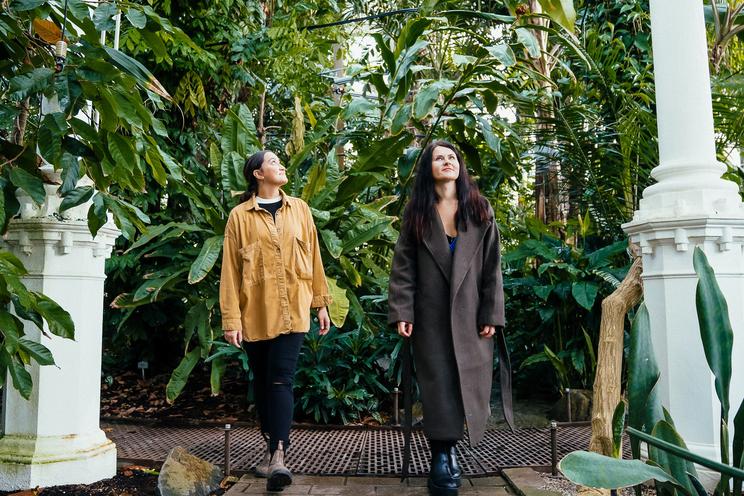
Palm House in the Botanical Garden
Entrance to the Palm House
Exit
This is where your experience in the Palm House ends.
Aquatic Plants and Mangrove
This section of the Palm House holds aquatic plants and swamp plants, mostly from tropical areas. All have in common that they live submerged in water or at the water’s surface. Notable species are the mangrove trees whose characteristic stilt roots make them adapted to living in areas with a heavy tide.
The smell it omits while in bloom imitates – very successfully – the stench of a rotting carcass, which attracts pollinating insects.
Warm Subtropics
This house reproduces the fertile conditions of warm subtropical areas and tropical mountain ranges.
Many plants that are of world-wide economic importance grow here, such as the date palm, coffee, cinnamon, avocado, and a number of citrus species.
Tropical Rainforest
The large dome at the center of the Palm House complex contains an unusually large and scientifically significant collection of cycads. One of them dates back to 1824 and is among the tallest under glass in Europe.
The fig trees (Ficus) are another valuable collection, with the oldest specimen dating back to the 1860s.
Giant bamboo (Dendrocalamus giganteus) grows in the southeastern part of the greenhouse. With a growth rate of up to 40 cm per day, it requires pruning several times a year, and once, it even grew through the glass roof!
The small sculpture Mask (1977) by Danish sculptor Sonia Ferlow Mancoba is hidden among the plants.
Dry Tropical Regions
Many of the plants in this house such as Saintpaulias, or African violets, are popular houseplants, but the house also holds several plants that are very nasty to touch, so beware! Some species are relatives of the common nettle but have a much stronger poison. They can hurt several months after touching.
The northern side of the greenhouse holds a collection of ferns, including large specimens of staghorn ferns hanging from the ceiling.
Mediterranean House
The Mediterranean House has an important collection of subtropical zone plants, mostly from areas with winter rain and summer draught such as the Mediterranean areas in Europe, South Africa, and Southwestern Australia.
Here you can find common trees such as olive, eucalyptus, and strawberry tree, but also rare and unique species from Australia. One of these, Wollemia nobilis, was believed to be extinct until a small group of these coniferous trees were discovered in a inaccessible gorge in Wollemi National Park in 1994.
On the southern side of the greenhouse you will find an interesting collection of carnivorous plants kept safely within their own small vitrine.
Succulent House
The house reproduces the dry environment that favours succulents, although other plant groups also thrive here.
Highlights here include examples of the world’s largest cactus, the edible prickly pears, and the golden barrel cactus from Mexico that grows in lava at 1400 meters altitude.
This house is part of the Palm House complex and requires a ticket.
Butterfly House
In the Butterfly House, colorful butterflies flutter among passion flowers and pineapple plants. Experience the life and transformation of butterflies up close.
This house is part of the Palm House complex and requires a ticket.
Ticket Sale
Buy your tickets her for the Palm House (incl. the Butterfly House ) and the museum.
Coffee Cart Mundfryd
Serves refreshments under the open sky during the summer season. Open depending on the weather.
Toilets
These Stairs are Closed
Access is through the ticket sales at the end of the Palm House.
These Stairs are Closed
Access is through the ticket sales at the end of the Palm House.
